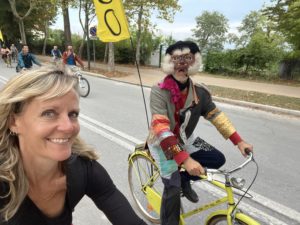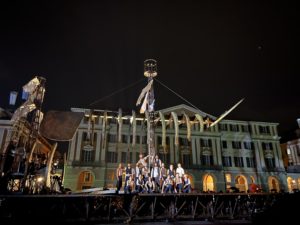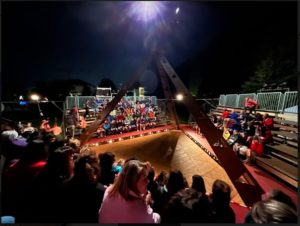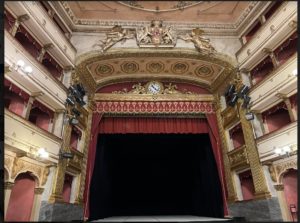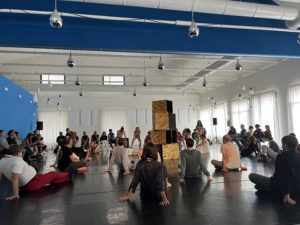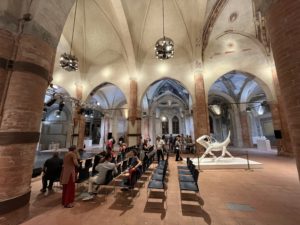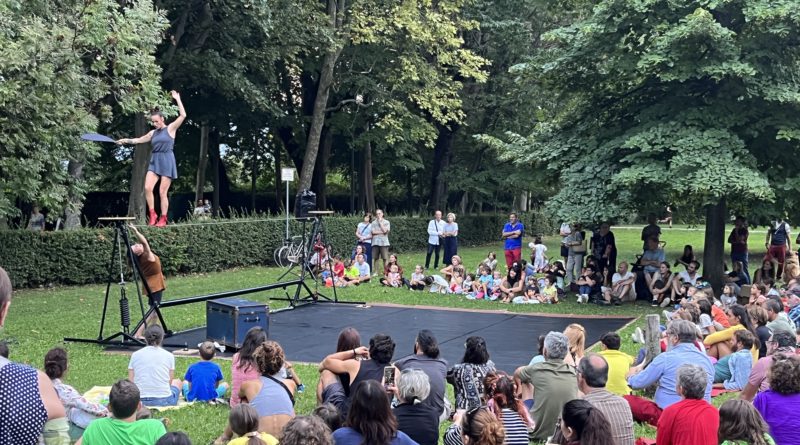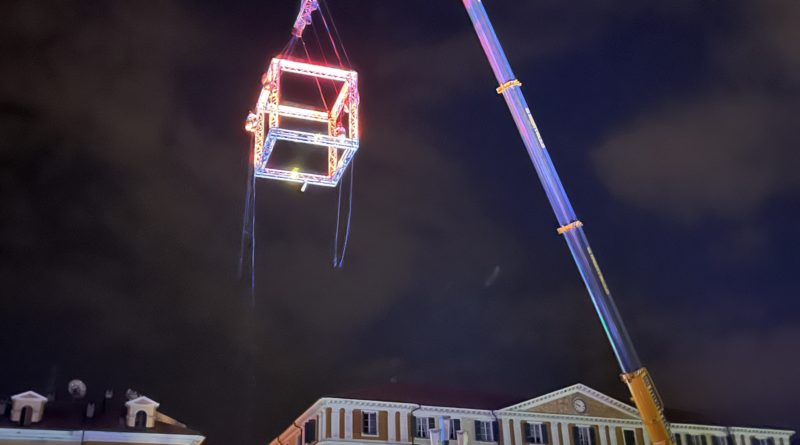Exploring Inner and Outer Spaces at Mirabilia 2022
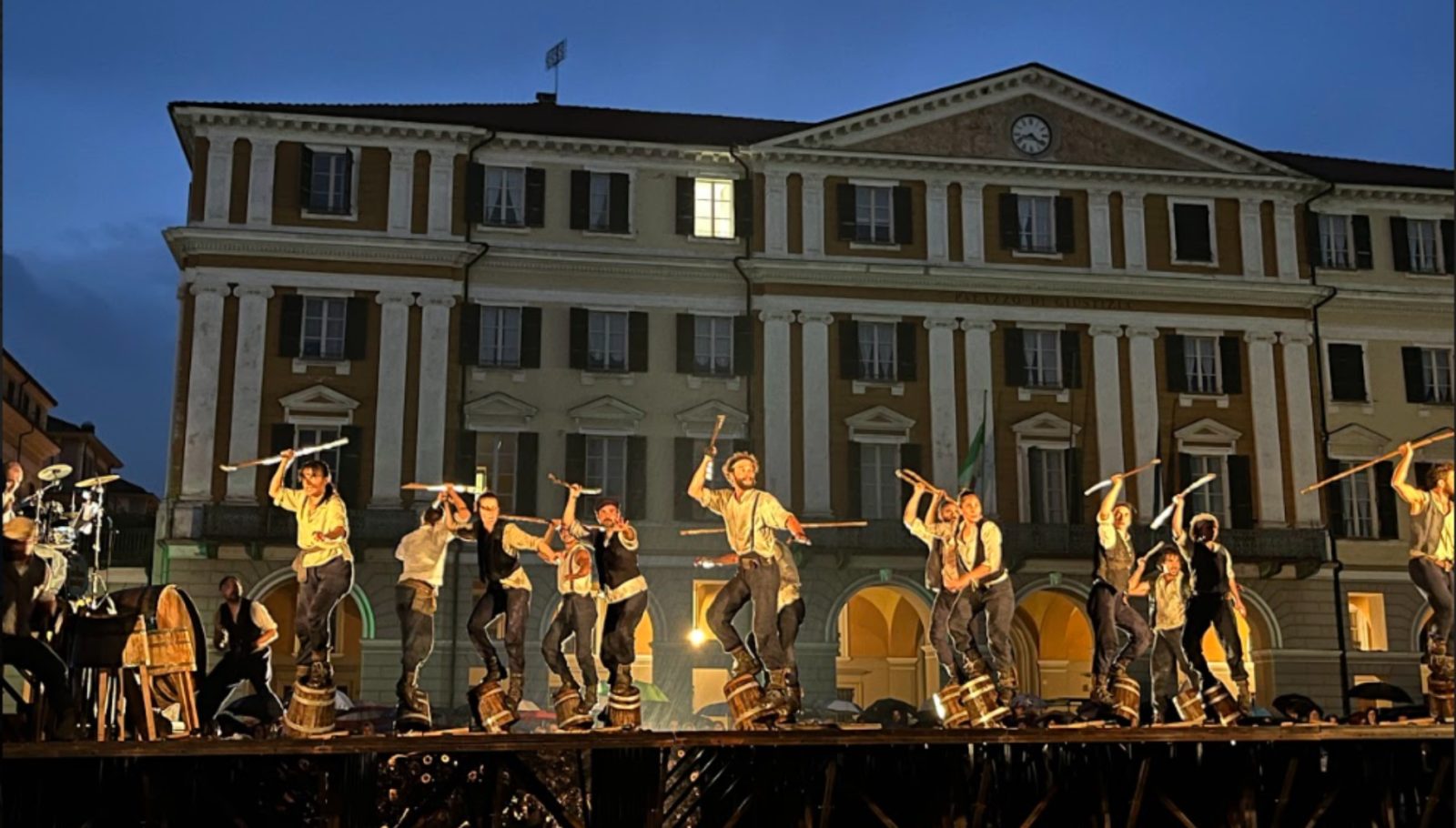
Every year in Italy, the Mirabilia festival provides a place—or several different types of them—where bold, inventive circus and theatre art can flourish. From Cuneo, Stacy Clark reviews some of the brightest shows in the 2022 festival roster with a careful eye for the unique staging that helps them shine.
First launched in 2008 by the cultural association IdeAgorà, the Mirabilia International Circus & Performing Arts Festival is a kaleidoscope of circus arts, theater, and performing, visual, and figurative art as well as music. The festival also supports training, networking, and exchange among artists and professionals.
This year’s festival, Strange Beasts from Outer Space, was led by Artistic Director Fabrizio Gavosto and billed itself as “an edition of Mirabilia that speaks of us, of man, through his relationship with nature, with the wild.”
Cuneo is a gorgeous city in the Piedmont region of Northern Italy where 14th and 15th-century architecture, sprawling piazzas, and gelato reign supreme. And while I may have benefited from the gelato, the festival did an extraordinary job of weaving live arts into the fabric of the city itself.
And so, here are my reflections on Spaces, and how the use of over 40 different locations defined my experience at Mirabilia.
Topping my list is The Champion and The Mosquito, the immersive urban theatre experience by Italy’s Faber Teater, whose work is motivated by what they describe as “an intense exchange of perceptions, emotions, energies, and ‘stories’ with the spectators, in the often unconventional places that host us.” Cuneo hosted this company spectacularly well: performers and spectator-participants alike mounted bicycles to partake in a “ride across space and time on the river of the 20th Century.”
Imagine 50 people on bikes meandering (with the assistance of traffic police) through the streets and parks of Cuneo while the moving Faber cast told the story of champion Italian cyclist Fausto Coppi and Anifele, the African mosquito that bit him. Glorious. Immersive, experiential theatre for all ages, featuring nature as an ever-changing set piece, and a bicycle seat for one’s bottom.
I saw Teatro dei Venti’s Moby Dick on the one evening when it rained—hard—in Cuneo. But not to worry; the inclement weather did not discourage the open-air audience, and even added a dramatic (albeit slightly hazardous for the acrobats) element to the staging of an urban spectacle theatre experience in Piazza Galimberti—one that begins with “the square… empty, suspended, breathing. It is waiting.”
Theatre, circus arts, dance, and music are then intertwined in an investigation of themes and settings inspired by the Herman Melville novel. An immense movable stage and its mobile scenery—giant barrels, ladders, heavy ropes, sails, trolleys, and wooden beams—is home to over 20 artists who undertake the construction of the White Whale while a narrator is supported by the sounds of the tammurriata drumming of Campania, Italy. The show is further enriched by the participation of dozens of local community members, young and old, who guide the stage into place in the center of the audience.
France’s CirkVOST presented A-Tripik after sundown in a mini gladiator arena-like setting in Giardini Lalla Romano. Billed as a show of clowns, acrobats, and vocal polyphony for an adult audience, A-Triptik spectators are advised upon entering the custom-built outdoor theatre to pay attention to the artists guiding them to their seats. And it is not hard to obey; the muscled and menacing trio of male performers pound their wooden staffs into the ground to punctuate their commands. (Later, the “menacing” evolves into layered portrayals of humanity, with each artist-acrobat-singer-actor offering a nuanced and evocative performance.)
In the triangular center ring, three ten-meter-high metal beams form a pyramid flanked by bleachers. The three protagonists question our complex relationships with power, asking: “Power is only an illusion – isn’t the best way to preserve to destroy those who covet it?”
Moving indoors for a moment: I attended shows in three distinct spaces whose design, architecture, and ambiance contributed to the experience of live multidisciplinary performances.
Teatro Civico, the first public theatre in Cuneo, was first built in 1803 and went on to be renovated in 1828. Upon reopening, it reportedly enchanted audiences with its liberty-style gilded stuccoes and lavish red velvet seating. It was eventually renamed the Civico Teatro Toselli after the famous actor and theatre director Giovanni Toselli, a name it retains to the present. The lush theatre features stalls seating, balcony box seats, and two galleries. What a contrast it makes, then, to the presentation of contemporary works in dance, circus, and theatre, and in some cases, a fusion of all three.
One such work is Doppelgänger by Compagnia Abbondanza/Bertoni, a challenging piece that presents the encounter between the bodies of the two performers—an actor with a disability, and a dancer— often so intertwined as to create a single moving form. Moreover, Cecilia Rosso also performed a bold and still evolving one-woman show Frammenti. Rosso’s journey of self-acceptance through lived experiences uses aerial apparatuses in unconventional ways, steering well away from performative circus skills. A sharp-looking set design includes mirrored mannequin busts in suspension. “And so it is,” as the festival programme notes, “that, illuminated by a thousand mirrors, she [Rosso] invites her audience to mirror themselves in her journey.”
Eartheart, a performative installation by Compagnia EgriBiancoDanza, was presented in the auditorium of Varco, a modern building typically used for music production, audiovisual production, and photography. I was among the 20 or so people who volunteered to “participate,” not knowing quite what was involved. Turns out it meant sitting on the dance floor with a small speaker slung around my neck, while dancers costumed in nude-colored apparel and fishnet stockings performed all around and even over us. The immersive piece considers the audience an active part of the performance, at once present and not present, helping to determine the modulation and constant reshaping of the space, sound, and choreographic patterns.
The next show on my list brought me to the Civic Museum of Cuneo, which is housed within the Chiesa di San Francesco, a national monument that includes a church and former convent dating back to medieval times. It is stunning, and rife with history. It is in this space that collettivo EFFE and Giulia Odetto presented Il mio corpo è (come) un monte _studio, a work that “starts from the expression of a rationally unattainable desire: wanting to be a mountain.” Live video camera projection using a microlens creates a textured, moving backdrop for the on-stage dance. It’s a study in framing and movement, resulting in compositions so close up they reveal shapes, details and patterns that make the dancer’s body feel like an element of nature.
Moving once again to the outdoors, in the same giardini not far from the CirkVOST stage, the female duo Circo in Rotta performed Tienimi Che Ti Tengo, a blend of contemporary dance, juggling, and wire walking that recounts friendship and feminine strength. Though likely designed for an indoor stage, I took delight in watching the audience sit, engaged, under blue skies. Dogs on leashes sniffed the grass and cyclists on the bike path “backstage” stopped to watch. Live arts for all.
eVenti Verticali lit up Piazza Galimberti with Cubo, an immense aerial truss structure shaped like, you guessed it, a cube. The three-dimensional, brightly lit aerial stage rises and lowers in space, courtesy of a crane. The moving bodies, attached with ropes and harnesses, dance in all dimensions, creating spectacle theatre in the air. As with Moby Dick, the piazza was packed with spectators young and old, and the towering structure could be seen from the apartment building windows and restaurant patios lining the square.
It only takes a glimpse at the festival program to realize my reflections are but a tiny sampling of the artists, works, and spaces showcased this year. In using so many varied and distinct historic, urban, and natural spaces, the festival brings performing arts to the people. Mirabilia does indeed speak of all of us.
All quotations cited from the festival programme content. Images courtesy of the author. Main image: outdoor presentation of Moby Dick.
Editor's Note: At StageLync, an international platform for the performing arts, we celebrate the diversity of our writers' backgrounds. We recognize and support their choice to use either American or British English in their articles, respecting their individual preferences and origins. This policy allows us to embrace a wide range of linguistic expressions, enriching our content and reflecting the global nature of our community.
🎧 Join us on the StageLync Podcast for inspiring stories from the world of performing arts! Tune in to hear from the creative minds who bring magic to life, both onstage and behind the scenes. 🎙️ 👉 Listen now!
